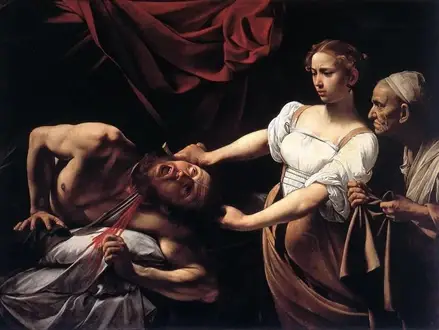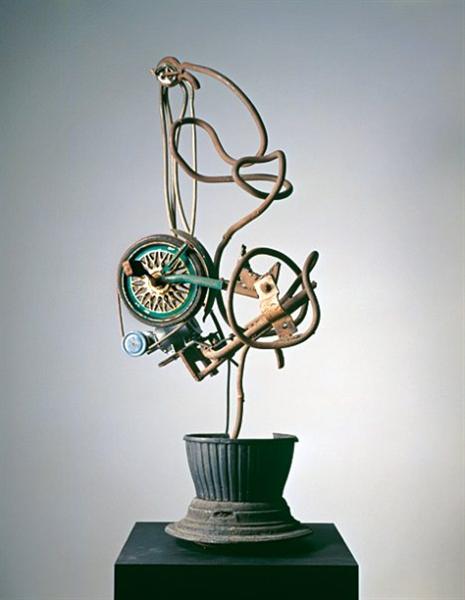Title of Artwork: “Judith Beheading Holofernes”

Artwork by Caravaggio
Year Created 1598-1599
Summary of Judith Beheading Holofernes
Judith Beheading Holofernes recounts the Biblical tale of Judith, who saved her people by seducing and beheading the Assyrian general Holofernes, a common theme in the 16th century. Many other artists, such as Sandro Botticelli, Donatello, Artemesia Gentileshi,
All About Judith Beheading Holofernes
Giorgione and Andrea Mantegna, have depicted the same storey. Even though Caravaggio was aware of Judith’s traditional identity as a symbol of triumph over tyranny, he chose to portray the subject primarily as a melodrama, choosing the relatively rarely represented climax of the beheading of Holofernes as his focal point. A physically weak and beautiful Judith pulls away from Holofernes as she grabs his hair and slices through his neck with her own sword, disgusting him. Holofernes, on his bed, powerful but intoxicated, naked, and bellowing helplessly, has frozen in the futile struggle of his last moments of consciousness. The bloodthirsty old maid clutches the bag tight as she strains forward, ready to pounce on the severed head. It’s a horrifying image that focuses on the emotions of the three main characters: the old woman’s grim satisfaction, Holofernes’s shock, and Judith’s resolve. Caravaggio emphasises the clenched hands as much as the poses, gestures, and facial expressions in his paintings. A dramatic shift has taken place, as if the world had ceased to be his oyster and had instead become a battlefield for his paintings.
If the figures have ceased to move, they continue to appear to be made of solid flesh, occupying the surrounding area. However, the voids that surround them are at least as black and two-dimensional as they are empty and three-dimensional. The image looks like it was captured with a wide-angle lens and unfolds in a panoramic manner rather than going into depth within a single field of view. The servant’s perfectly profiled head—in relief rather than fully rounded—implies a perspective from the right edge of the painting rather than from the centre of the canvas. Caravaggio had not yet fully developed the technique of rendering the effect of vigorous action within fully convincing three-dimensional space on a two-dimensional surface, which is most likely why this oddity exists. Alternatively, the painting may have been designed to be viewed from the right and he was already experimenting with anamorphic composition. In Caravaggio’s Judith Beheading Holofernes, Da Vinci’s influence can be seen clearly. Holofernes’s old crone’s grotesquely intense face is undeniably evocative of da Vinci’s caricatures.
Information Citations
En.wikipedia.org, https://en.wikipedia.org/.

























